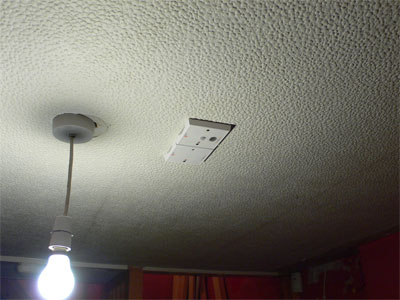My default has been to install most sensory modules in the ceiling, limiting the number of modules installed into walls to light switches modules (usually DRB-001) replacing existing switch plates.
This reduces the amount of chasing (which is a major nightmare with lime plaster), and is a lot easier than chasing if you have access to the floor above to run cables in.
I believe that the ceiling positioning is fairly optimal for the PIRs - the devices used by Idratek are optimal for XY movement and less sensitive to Z-plane (ie towards the sensor).
The light sensors need a bit of thought, too close to light bulbs can lead to problems (oops):

but wall mounting can also create problems with shading, as I found with my temporary living room install. I've also had some weirdies in the kitchen when lining a baking tray with tinfoil right underneath the sensor. Since I've used the combined LPS-001 devices I guess I've optimised for PIR. This is one argument for using separate modules, where the PIR would be ceiling mounted, but the light level sensor would be wall mounted at a high level to observe the reflected light level from an opposite wall that is not subject to variation other than through illumination (so no tall people allowed).
Having not yet done much with the IR capabilities, it's a bit early to tell, but again I think the ceiling is probably the best place in terms of maximising visibility and also the chances of the transmitter reaching the device being controlled.
However, temperature and humidity sensing are probably better off in the wall. It is normal practice to install thermostats at body height, since this approximates where people live. Hot air rises, people don't. I understood that, but assumed that I'd be able to counteract it with an experimental offset, not as convenient as dialling in say, 20°C, but workable. Since I'm still experimenting with heating control it's too early to tell. The biggest impact may be on usability unless I can "hide" the offset somewhere, so that Tamzin can request 20°C and get 20°C at living height. Although I'm wondering if retaining complete control over all heating increase requests might be financially more sensible ... at least until the "adequate jumper wearing detection" module is implemented.
I have had an unexpected side effect when installing the sensor in the bathroom. Since the ceiling is underneath a flat roof, inserting the box created a path for cold air to fall from the void, through the box and out through the module ventilation slots, creating rather variable readings. It was pretty easy to seal up the box once I noticed what was going on. However, it also seems to have reduced the speed of response on the humidity sensor, since the counterflow of hot wet air upwards was presumably also reduced.
